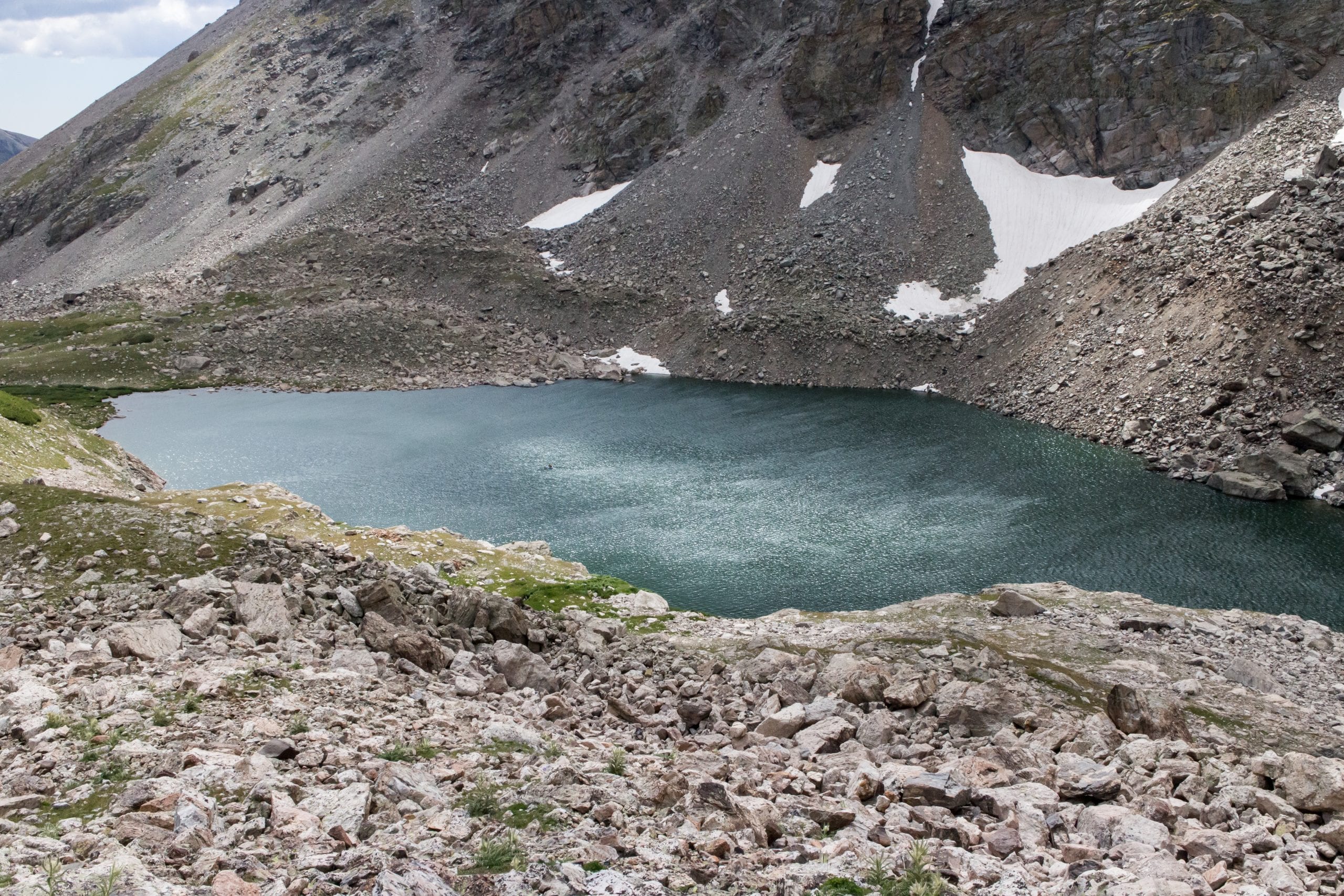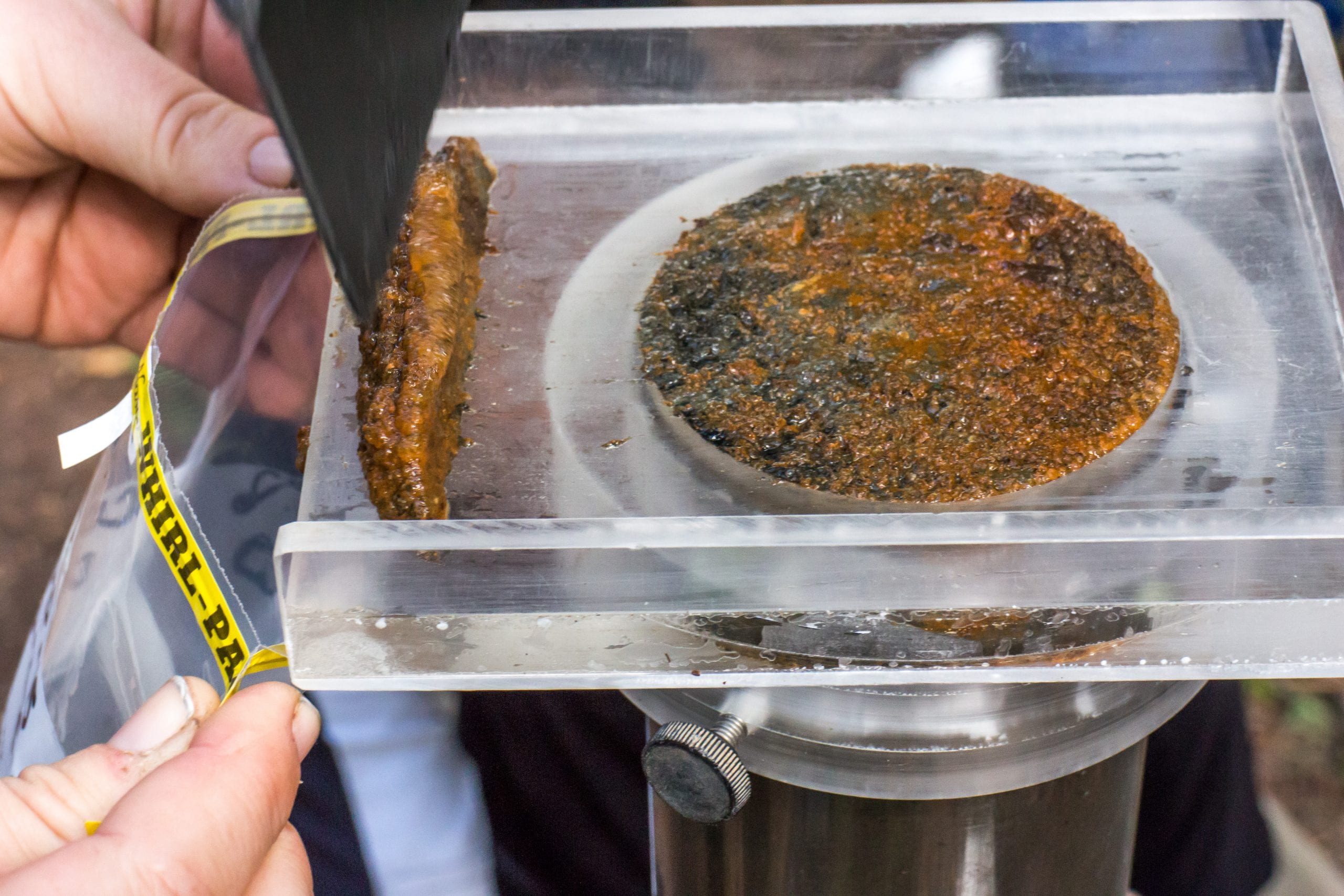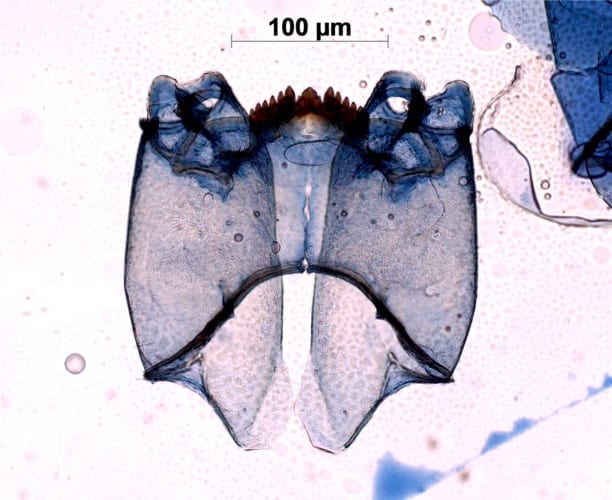The world's greatest library lies centimeters below the surface of the Earth. We would know the planet's best-kept secrets if we could understand the text in which its stories are written. PhD Candidate, Danielle Haskett, has dedicated the last six years learning to interpret this earthly code, written in the form of fossilized bug heads.
These heads are the remnants of past populations of aquatic insects called midges (Chironomid). Midges begin their life cycle as aquatic larvae. As they metamorphosize into adults, midges leave their larval head capsules in the sediment. Each midge genus is prolific under specific environmental conditions, including favored temperatures. Therefore, the abundance of different midge species at a given time provides hints about that area's climatic conditions.

Danielle's process of studying climate change begins by extracting a sediment plug from the Earth's surface. This core is effectively a copy of nature's diary, and allows Danielle to view a chronological log of a region's environmental history. As time progresses, sediment builds upon sediment trapping their unique qualities between the layers. Imagine a straw pressed into a cake with each layer a different flavor. Cut the straw open lengthwise with a scalpel, and you could distinguish each, distinct flavor. Sediment cores serve the same function; except each section provides a window into a moment of geological time.

Core samples may look like muddy soup to the naked eye, but examined under 50 times magnification the homogenous grime transforms into a mosaic from a bygone world. A sparse sample becomes an intricate puzzle of crystals, tiny fragments of ancient flora, and a graveyard of archaic bug heads.
One by one Danielle plucks the microscopic capsules from each core section. The work is tedious, but every head cap provides clues about the region's past climate. Differences as slight as a crooked jaw or a jagged edge on a tooth are all Danielle needs to identify a specific type of larva. While these minor differences may seem trivial to the average individual, to Danielle they tell a story of a dynamic, prehistoric world. Using head capsules as proxies Danielle traces changes in regional temperature by plotting the midge types found in each segment across the total time the core represents. Charting midge community changes allows Danielle to develop an image of the region across hundreds, sometimes thousands, of years.

The trade Danielle practices has been applied in climatic studies across the globe. From tracking ice ages to measuring biodiversity, midge assemblages have given researchers a more intimate understanding of climate. For her master's project Danielle collaborated with a team of climatologists to document the changing thermal conditions during the Sangamon Interglacial; a time when giant sloths and woolly mammoths dominated North America. Her work adds color to an otherwise simple, monochrome image of environmental history, and should remind us that we are but brief guests on this ever changing planet.
 Harrison Brock is an undergraduate biology and ecology major at UGA. You can find him running around in swamps, hunting invasive pigs, and cooking said pork with his friends. Social media doesn’t agree well with his stomach, but you can connect with him at hkb4@uga.edu or via the Environmental Change Lab. More from Harrison Brock.
Harrison Brock is an undergraduate biology and ecology major at UGA. You can find him running around in swamps, hunting invasive pigs, and cooking said pork with his friends. Social media doesn’t agree well with his stomach, but you can connect with him at hkb4@uga.edu or via the Environmental Change Lab. More from Harrison Brock.
About the Author
- athenssciencecafehttps://athensscienceobserver.com/author/athenssciencecafe/April 17, 2020
- athenssciencecafehttps://athensscienceobserver.com/author/athenssciencecafe/April 12, 2020
- athenssciencecafehttps://athensscienceobserver.com/author/athenssciencecafe/April 3, 2020
- athenssciencecafehttps://athensscienceobserver.com/author/athenssciencecafe/March 30, 2020







